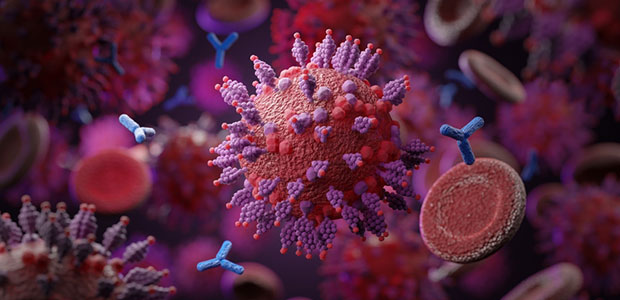
Omicron ‘Stealth’ Variant: What Do We Know So Far?
A new version of the Omicron variant of SARS-CoV-2, known as BA.2, emerged.
- By Shereen Hashem
- Feb 11, 2022
Although experts are unsure about BA.2 effects, they know that it is spreading quickly and has 20 mutations in the area that most COVID-19 vaccines target. Scientists first identified the BA.2 subvariant of Omicron in India and South Africa in late December 2021. Since then, it has spread to countries, including the United States and United Kingdom.
According to an article, the subvariant virus has also spread rapidly in Denmark, increasing from 20 percent of all COVID-19 cases in the country in week 52 of 2021 to 45 percent in the second week of 2022. Despite its rapid spread in the country, initial analyses show no difference in hospitalizations between the BA.2 subvariant and the original form of Omicron, also known as BA.1. Studies, however, are still ongoing to understand the infectiousness of BA.2, alongside how effective vaccines are against it. While BA.2 is not currently a “variant of concern,” public health officials in the U.K. have taken enough interest in its spread to designate it as a “variant under investigation.”
“Omicron has three main [subvariants] — BA.1, BA.2, and BA.3 — according to the World Health Organization (WHO),” Dr. Donald C. Vinh, associate professor in the Department of Medicine at McGill University, Canada, said.
How the fast spread of the BA.2 subvariant may affect public health is still under investigation.
“The Omicron SARS-CoV-2 variant has been interesting to scientists because of its comparatively (i) higher number of mutations, which […] allow it to partially evade people’s immune response; (ii) higher transmissibility and pathogenicity, i.e., its greater ability to infect and cause disease; and (iii) lower virulence, i.e., its lower ability to cause severe disease,” Dr. Richard Reithinger, Ph.D., vice president of global health at RTI International, explained.
While researchers are still gathering data on how BA.2 may affect the population at large, laboratory studies have already verified many of its molecular properties.
“BA.2 is missing the spike 69-70 mutations, so it does not cause S gene target failure, making it harder to identify on PCR tests,” Dr. Anna Ssentongo, assistant professor of public health at the Penn State College of Medicine, said. “Because of this, BA.2 was nicknamed the ‘stealth variant.”
Dr. Pavitra Roychoudhury, research associate at the Vaccine and Infectious Disease Division at the University of Washington, explained: “It remains to be seen how BA.2 will compete against currently circulating viruses […], and also whether it causes more severe disease. […] We will continue to monitor frequencies of BA.2 through the use of genomic surveillance.”
According to the article, “We know that this has been a variant that has been present since the early days of Omicron and that it has some similar and some distinct mutations. It is unclear, as of now, whether it is more transmissible. [It] likely has the same characteristics when it comes to vaccine efficacy and severity.” However, Dr. Barton F. Haynes, director of the human vaccine institute in the Department of Medicine at the Duke University School of Medicine, said that due to its molecular changes, there might be cause for concern regarding BA.2.
“We are worried that because it is so different than Omicron BA.1, it may escape current vaccines and Omicron BA.1-neutralizing antibodies,” he noted. “To this point, we are working to study the Omicron BA-2 virus to see whether current vaccine-induced neutralizing antibodies neutralize it.”
“Additionally, even if vaccinated, people should consider adhering to non-pharmaceutical interventions, such as face masks, physical distancing, and handwashing, particularly when in crowded and/or high transmission environments,” he advised.